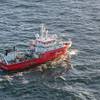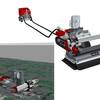DNV GL on Use of AI in Oil and Gas
As artificial intelligence (AI) systems begin to control safety-critical infrastructure across a growing number of industries, the need to ensure safe use of AI in systems has become a top priority.
DNV GL has launched a position paper to provide guidance on responsible use of AI. The paper asserts that data-driven models alone may not be sufficient to ensure safety and calling for a combination of data and causal models to mitigate risk.
Entitled AI + Safety, the position paper details the advance of AI and how such autonomous and self-learning systems are becoming more and more responsible for making safety-critical decisions.
The operation of many safety-critical systems has traditionally been automated through control theory by making decisions based on a predefined set of rules and the current state of the system. Conversely, AI tries to automatically learn reasonable rules based on previous experience.
Since major incidents in the oil and gas industry are fortunately scarce, such scenarios are not well captured by data-driven models alone as not enough failure-data is available to make such critical decisions.
AI and machine-learning algorithms, which currently rely on data-driven models to predict and act upon future scenarios, may not be sufficient then to assure safe operations and protect lives. DNV GL seeks to combine the best of the traditional physics-based methods with the opportunities provided by novel data-driven approaches.
“The emergence of AI and digital-based solutions is the next natural step for the oil and gas sector to drive efficiencies and forty percent of senior oil and gas professionals say that digitalization has improved safety over the past three years. The industry is already developing and working with autonomous robots capable of performing a plethora of complex actions, including reading dials and gauges and navigating around obstacles on offshore assets.
“However, a combination of data-driven models and the causal and physics-based knowledge of industry experts is essential when AI and machine learning are used to inform or make decisions in safety-critical systems,” said Simen Eldevik, author of the position paper and a principle research scientist with DNV GL Risk & Machine Learning.
The position paper stresses that if the industry can supplement these data-driven models by generating physics-based casual data, it will be significantly closer to the safe implementation of AI in safety-critical systems.













